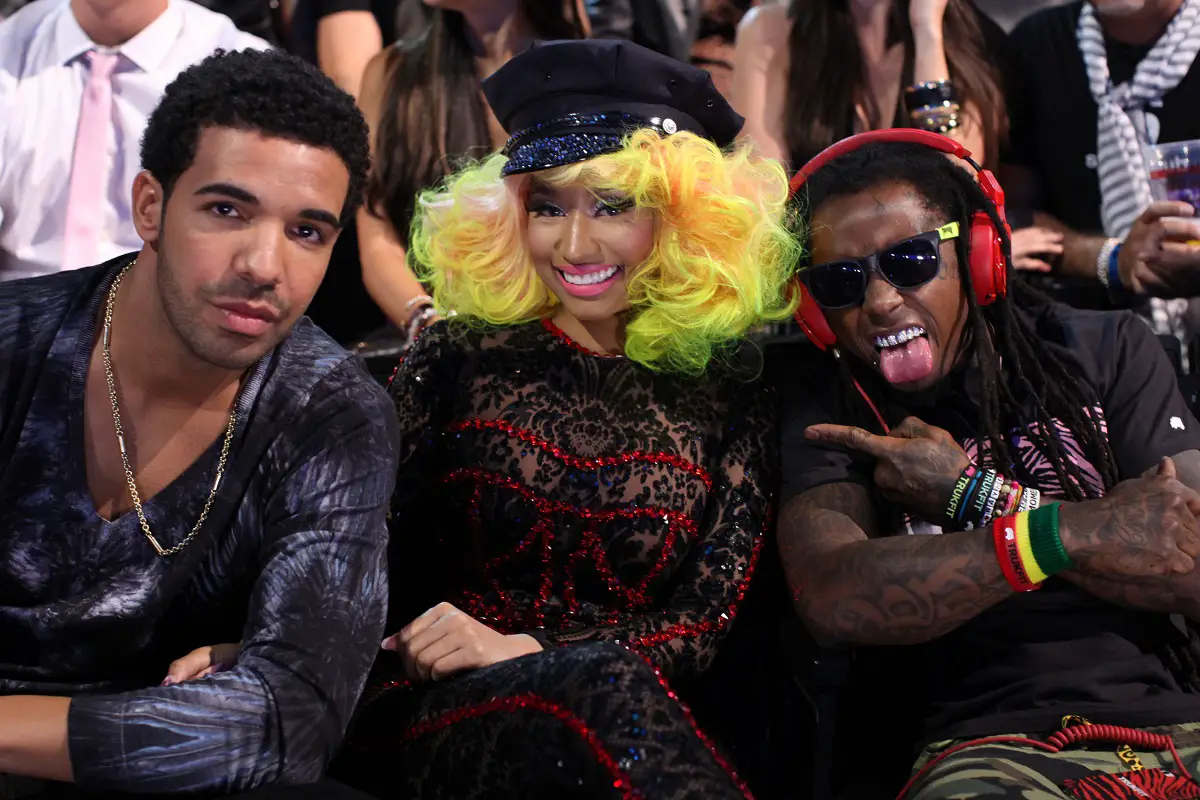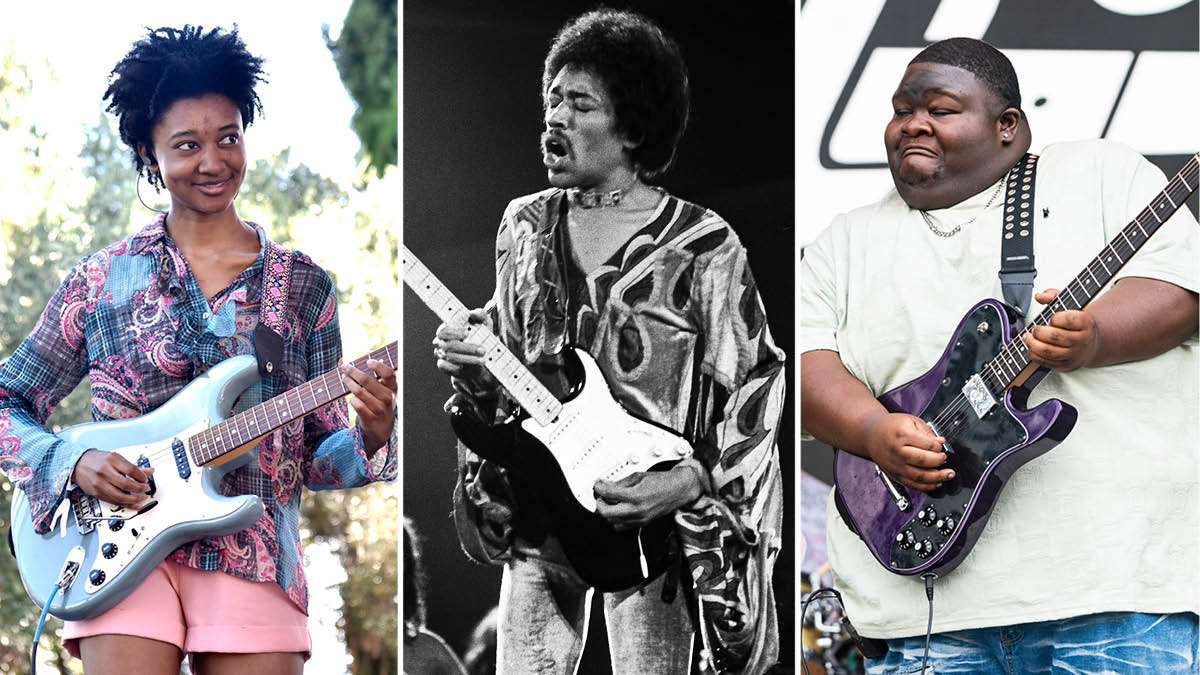Latest News
 Lil Wayne Says Eminem Is His Hip Hop ‘Quarterback’ #hiphop
Lil Wayne Says Eminem Is His Hip Hop ‘Quarterback’ #hiphop Selena Gomez, Benny Blanco Will Feature GloRilla, More on Deluxe ‘I Said I Love You First’ #GloRilla
Selena Gomez, Benny Blanco Will Feature GloRilla, More on Deluxe ‘I Said I Love You First’ #GloRilla EXCLUSIVE: Wack100 on Yella Beezy Charged with Capital Murder for Mo3 #YellaBeezy
EXCLUSIVE: Wack100 on Yella Beezy Charged with Capital Murder for Mo3 #YellaBeezy Selena Gomez and Benny Blanco Set Deluxe Edition of ‘I Said I Love You First,’ Featuring Glorilla and More #GloRilla
Selena Gomez and Benny Blanco Set Deluxe Edition of ‘I Said I Love You First,’ Featuring Glorilla and More #GloRilla Sierra Ferrell & Jelly Roll Join Post Malone At Stadium Tour Kick Off In Salt Lake City #PostMalone
Sierra Ferrell & Jelly Roll Join Post Malone At Stadium Tour Kick Off In Salt Lake City #PostMalone Misa Hylton, Vado Sue Mary J. Blige For $5M #MaryJBlige
Misa Hylton, Vado Sue Mary J. Blige For $5M #MaryJBlige Post Malone & Jelly Roll Set List for 2025 Tour Revealed After Performing First Show in Salt Lake City #PostMalone
Post Malone & Jelly Roll Set List for 2025 Tour Revealed After Performing First Show in Salt Lake City #PostMalone Birdman Reveals How Much Cash Money Made From Drake, Lil Wayne & Nicki Minaj #NickiMinaj
Birdman Reveals How Much Cash Money Made From Drake, Lil Wayne & Nicki Minaj #NickiMinaj Mary J. Blige Sued By Stylist Misa Hylton Over Rapper Vado’s Deal #MaryJBlige
Mary J. Blige Sued By Stylist Misa Hylton Over Rapper Vado’s Deal #MaryJBlige Birdman Says Lil Wayne, Drake & Nicki Made Over $2 Billion #Birdman
Birdman Says Lil Wayne, Drake & Nicki Made Over $2 Billion #Birdman
How Jimi Hendrix’s groundbreaking techniques are still influencing the modern rock, blues and R&B styles of today’s players #rnb
guitarworld December 31, 2023
r&b 41

This tab and video lesson details how Hendrix inspired the likes of Melanie Faye, Christone “Kingfish” Ingram, Marcus Machado, Ayla Tesler-Mabé, Joanne Shaw Taylor and Ayron Jones
Jimi Hendrix is rock’s most important and influential guitarist, rightfully revered as one of the most significant musicians of all time. More than a half-century ago, the Jimi Hendrix Experience’s 1967 debut release, , included this bold proclamation: “Be forewarned. Used to be an Experience meant making you a bit older. This one makes you wider. Jimi Hendrix breaks the world into interesting fragments, and then reassembles it. You hear with new ears after being Experienced.” ’60s record-company hype? Absolutely, but also 100 percent true. All these decades later, Hendrix’s playing on and his subsequent recorded performances remains among the freshest and most exciting music ever heard, and his influence as a guitarist, composer and sonic innovator continues to resonate with today’s youngest generation of guitarists. In this lesson, we’ll explore how Hendrix’s music has inspired the distinct, signature styles of six of today’s top players – Melanie Faye, Christone “Kingfish” Ingram, Marcus Machado, Ayla Tesler-Mabé, Joanne Shaw Taylor and Ayron Jones. 25-year-old Melanie Faye is a phenomenal guitar player from Alabama, now based in Nashville, who brings a jazz/R&B sensibility to Hendrix’s music, as evidenced in her creative and expressive arrangement of his classic ballad . illustrates some of the techniques and chord voicings Faye employs in her cover of the song. The example begins with a beautiful Eadd2 chord voicing played in 1st position, which is reverse raked by dragging the pick upward across all of the strings, sounding each string individually while allowing all of them to ring together. This is followed by lush voicings of F#m7add4, G#mb6 (or Eadd2/G#) and Amaj9 that include the open top two strings. You’ll hear Hendrix utilize these kinds of chord voicings on songs such as , , and others. In bar 4, an Am9 voicing is embellished with a quick slide up and down the high E string between the 7th and 8th frets, followed by a pull-off to A at the 5th fret. Faye loves to use quick slides and pull-offs like these, and you’ll hear her utilize this technique a lot in her playing. The bar ends with a descending lick that resolves to E major in the subsequent bar, setting up the shift to her take on . In bars 6 and 7, played over Em and G, quick hammer/pulls are used as chordal embellishments in the same kind of way that Hendrix decorated his phrases in , as well as in songs like , and . At the end of bar 7, a G# diminished 7 chord is arpeggiated (each note is picked individually) setting up the subsequent Am7add4 in bar 8. The jazz sensibility is revealed via the Eb maj#5 and Ebm7b5 chords at the end of this bar, and this colorful move brings us back to the tonic, Em7add4, which is articulated with a quick double hammer-on and more chordal arpeggiation. Bars 10 and 11 include wide-stretch chord voicings for Bm9 and Am9, and bar 11 culminates with a very Hendrix-like descending phrase that sets up the Gadd9 chord in bar 12. The following Fadd9, Csus2 and Dadd4 chords are all arpeggiated, and in bar 15, a single-note phrase outlines an Eb diminished 7 arpeggio (Eb, F#, A, C) and alludes to a B7b9 chord, which then resolves satisfyingly to Em. One of the most exciting young blues guitarists on the scene today is Clarksdale, Mississippi’s Christone “Kingfish” Ingram, who, at just 24 years old, has turned heads and earned accolades far and wide. Writer Tom Moon describes Ingram’s playing as “Astounding… it’s almost as if he is singing through the guitar.” Ingram often covers and, not unlike Faye, he likes to substitute more complex chord voicings during the progression before unleashing very Hendrix-inspired, fiery blues-rock solos. presents a rhythm part akin to Ingram’s approach to . As opposed to sticking with the original song’s standard major-chord progression of C - G - D - A - E, the harmony is broadened here, starting with arpeggiations of C6/9 and G6/9. Both of these chords include the notes E and A, fretted on the D and G strings at the 2nd fret, respectively. This is followed by Dsus4 resolving to D and Asus4 resolving to A. The progression wraps up with a 1st-position Em7 voicing that includes the open D, G and high E strings. The song’s form is built from a repeating four-bar progression, and at the end of each four-bar group, as shown in bars 4 and 8 in this example, signature single-note fills are added, which set up the return to the top of the form. is an eight-bar solo played over this same repeating progression in Ingram’s style. Utilizing a with a nod toward Hendrix’s sonic palette, the solo is rooted in lines based on the E minor pentatonic scale (E, G, A, B, D) and the E blues scale (E, G, A, Bb, B, D). It begins with a heavily vibrato-ed whole-step bend from D up to E, played on the B string’s 15th fret. The phrasing in bars 1 and 2 is based primarily on 16th-notes and 16th-note triplets. In bar 3, a quick descending phrase is played across beats 3 and 4 in a rhythm of 32nd notes, à la I Read more







